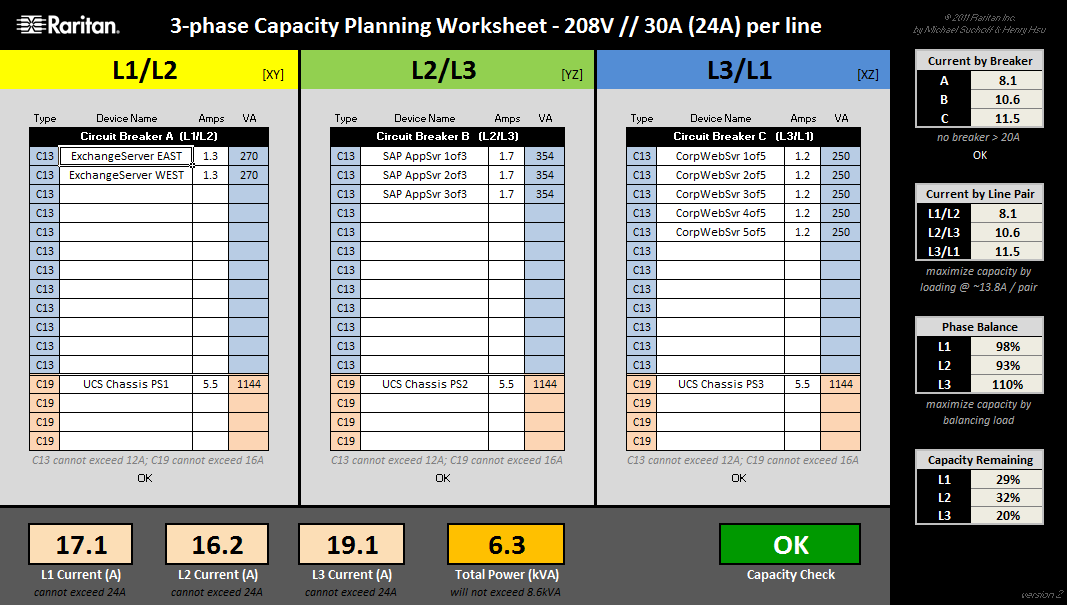The Raritan Blog
Home » Raritan Blog
When Considering a Centralized Management Solution, Know the Advantages of a Turn-Key Appliance
August 19, 2011
In the server world, an appliance is a completely enclosed turn-key unit, in which the operating system, application software and client interfaces are integrated into one easy to deploy package. Administrators don’t need to spend nearly as much time managing an appliance as they do a typical server. The hardware and software is pre-installed and configured by the manufacturer and is typically a plug and play device. Very secure, hardened appliances also require no management of security tools such as firewalls and anti-virus software. For several years, Raritan has provided its CommandCenter Secure Gateway centralized management solution in the form of an appliance. Rack mounted hardware and virtualized versions are available. The hardware (or physical) appliance is deployed as a two unit “cluster” for easy primary/secondary redundancy. When added scalability is needed, primary units can be set up in a multi-appliance “Neighborhood”.
Other solutions in the market are available simply as Windows or Linux applications and use what’s known as a “hub & spoke” configuration to enable scalability and redundancy. A hub & spoke solution consists of one primary host or “hub” server and one or more secondary “spoke” servers. Access & management application software is installed on each server in the configuration and are identified as either a hub or a spoke. Each hub & spoke server contains a database for storing user, configuration and system information. Each unit also serves as a point for authentication, user access rights, logging and licensing. One of the servers is assigned “hub” status and contains the system’s master database.
DCIM – How Do I Decide What’s Right For Me and Cut Through All the Hype and Confusion?
July 15, 2011
As SVP of Global Sales and Marketing for Raritan, I have had the opportunity to speak with many different companies around the world that have been considering a DCIM solution. In most cases, the conversation quickly turns to “with over XX companies and growing claiming to have some sort of a DCIM solution out there today, how do I chose the right one?” I can see the frustration on their faces as they try to decide which solution is right for their specific needs. At this point I tell them to take a deep breath and then I try to help them simplify the problem down to some basic needs.
First, let’s identify your top one to two most pressing needs. What problem or problems are you trying to solve? Are they in the areas of asset management, capacity planning, energy management, visualization, change management or environment management? Sure many of the companies that offer solutions in the DCIM space claim to offer all of these features, but do they really solve the problem that you are facing? Chances are not. Don’t try and boil the ocean. Solve for the few biggest problems first.
Raritan at Cisco Live!
July 1, 2011
Raritan Booth #849
July 11-14, 2011
Mandalay Bay Resort and Convention Center
Las Vegas, Nevada
How to Calculate Current on a 3-phase, 208V Rack PDU (Power Strip)
Henry Hsu
March 14, 2011

Problem Statement
In recent years, extending 3-phase power distribution all the way to server cabinets and racks has become extremely popular in new data center builds—for many good reasons. Principally, for cabinet power capacities above 5kVA, utilizing 3-phase rack power strips can significantly reduce the copper required to supply such dense loads.
But unfortunately, many users (rightly) find it cumbersome to provision and calculate current (amperage) for 3-phase power in the rack—for example, a typical question would be:
Dominion KSX II Firmware Update - Release 2.3
Richard Dominach
February 21, 2011
The Dominion KSX II combo KVM/IP and secure console server has been upgraded to include all KX II Release 2.3 features, except tiering/cascading. This includes FIPS 140-2 encryption, Smart Card/CAC and other security features, making it ideal for government, military and other security conscious customers.
The KSX II supports 4 or 8 “true serial” connections for remote/branch office deployments, as well as racks requiring both KVM and serial connections. A “true serial” connection gives secure console access over IP without the use of an expensive dongle. In addition, third party SSH clients can be used in addition to Raritan’s Serial Client with features such as logging, cut and paste, and secure chat.
If you have branch offices or racks with serially and KVM controlled devices then the Dominion KSX II can give you anytime/anywhere KVM and serial remote access.
Subscribe
Upcoming Events
- 7x24 Exchange Spring
- June 9th • JW Marriott Orlando Grande Lakes
Latest Raritan News
- Legrand Certifications and Process Controls Provide Confidence in Information Security for Network-Connected Devices in Data-Related Applications
- Posted on April 1, 2024
- Legrand Releases Version 4.0 of Raritan’s Industry-Leading Secure KVM Switches, Raising Bar for Secure Desktop Access
- Posted on July 31, 2023
- Legrand Revitalizes Data Center Sector with Two Revolutionary Intelligent Rack PDUs
- Posted on May 1, 2023
- Raritan Reveals The MasterConsole® Digital Dual KVM Switch
- Posted on February 18, 2021
- Legrand Data, Power and Control Division Announced as Finalist in Six Categories at DCS Awards 2020
- Posted on November 9, 2020